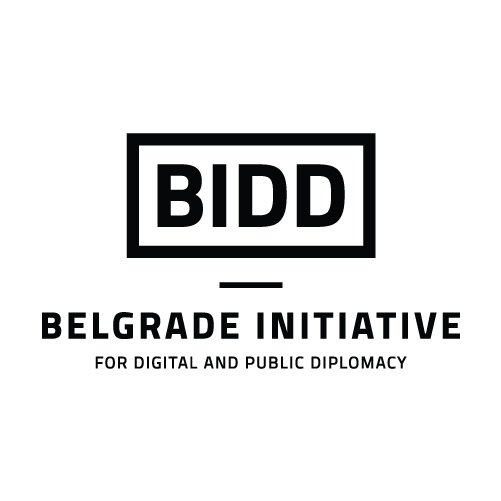Global events vividly displaying the social significance of religion and secularism as powerful mottos of governance and rebellion have marked the last decade. In spite of the fact that religion and secularism carry multiple ‘households of meaning’, on the international scene they often appear as if they were uniform and singular ideas.[1] The War on Terror launched in defense of freedom,[2] the revival of new Taliban movements in Pakistan claiming to be defending religion, or the Arab Spring, where Islamist versus secular political identities have dominated the conflict arenas, are a few illustrative examples of the mobilizing role hardened doctrines can play. Doctrinal conflicts are an increasingly important part of international conflict, as yet little attended to by the scholars of IR. During the past decade, sufficient empirical evidence points to the fact that doctrines of order, sovereignty and governance (packaged into labels of ‘secularism’ and ‘religion’), matter for the major conflict line between entities such as Islamism and the West – not in terms of irreconcilable civilizational categories per se, but when they enter the field of security politics.
A doctrine constitutes a set of ideas, principles, or beliefs, which is accepted as authoritative or true by a group of people.[3] Doctrines are, however, not static, nor do they necessarily lead to conflicts, but when they enter they realm of security politics they often appear uncompromising and hardened. Hence, doctrines are relevant for war when they are securitized; that is, when they are lifted from the realm of ordinary politics, where differences can be negotiated and tolerated, to the extraordinary realm of security politics where the ordinary rules of democratic conversation and negotiation do not always apply.
Writing in the early 20th century, social scientist William Graham Sumner pointed to a perilous relationship between wars and doctrines that has regained salience today. “If you want a war”, he wrote, then
nourish a doctrine. Doctrines are the most frightful tyrants to which men are ever subject, because doctrines get inside a man’s reason and betray him against himself. Civilized men have done their fiercest fighting for doctrines…. Now when any doctrine arrives at that degree of authority, the name of it is a club which any demagogue may swing over you at any time and apropos of anything.[4]
Particularly since September 11, 2001, doctrinal conflicts have come to the forefront of global affairs, and we have seen doctrines being raised to a level of authority that compels individual activists, organized groups and governments enter war or engage in armed conflict. Doctrines of freedom, religion, and secularism, presented as unambiguous principles of governance and order, are today frequently referenced in confrontations throughout the world. Some examples of the invocation of these doctrines include not only the September 11 attacks on the World Trade Center and Pentagon in 2001, but also: the US-led invasion of Afghanistan later the same year and of Iraq in 2003; the release of the Dutch movie Submission in 2004; the Danish Cartoon Crisis in 2005; the 2004 suicide attacks in Madrid; and the attacks in London the following year. The ongoing violence linked to the insurgencies in Iraq, Afghanistan, Pakistan, Mali and Syria are also apparent examples that can be inscribed into global doctrinal tensions, resulting in bloody and tragic confrontations.
What has Changed?
There is in fact nothing historically new in observing a clash between conflicting principles, beliefs or ideologies. The wars of religion in Europe before the Westphalian peace settlement, the French Revolution, and the Cold War are all major incidents in world history that have been described as events with ideational dimensions. However, empirically, there are new developments for IR scholars to consider, particularly after a long period that has been characterized by silence when it comes to the role of religion and secularism in IR.[5]
The doctrinal wars of today are more globalized and less bound to specific territory or geography. That a movement like al-Qaeda can attract foreign fighters to a variety of battlefields on the basis of its claim to defend Islamic doctrines is the ultimate example of the globalization of doctrinal battles. It is notable for the major doctrinal confrontations today that their battlefields easily expand from the national realm to become international and global in scope. Those participating in the conflict rapidly embrace a larger frame of understanding, translating such events into a fundamental conflict between ‘Islam’ and the ‘West,’ or between opposing principles of governance and public order. Some might use this to argue that Samuel Huntington was after all right in ascribing significance to civilizational categories; yet it is important to note that doctrinal confrontations seem to run across religions, civilizations, ideologies and worldviews.
The enemy in doctrinal wars is first and foremost an abstract image, but in order for action to be taken it is brought down to earth and materialized, as was the case when US troops invaded Taliban-led Afghanistan in defense of freedom. Unlike the competing ideologies of the Cold War, the doctrines defended today seem to be more ambiguous, paradoxically drawing on less content-fixed concepts despite their strong appeal to broad publics. It is not easy to point out what exactly is being claimed when freedom is represented as a fundamental pillar of western civilization or sharia as a fundamental code for the Islamic civilization. The rivalry between capitalism and communism was somehow simpler in terms of its boundaries, as it was simultaneously an East-West conflict and a clash between the mightiest power centers of the world. Globalization has clearly complicated the conflict structures around the world.
Years before 2001, the sociologist of religion Mark Juergensmeyer described the emergence of a new Cold War between the secular state and religious nationalism in a way that captures one dimension of doctrinal wars: religious nationalists reacting against the secular state.[6] Today this conflict-axis does not appear tightly linked to the state since battles have become organized around principles rather than the nation-state. Transnational religious activists are seemingly reacting against traits ascribed to larger entities like the ‘West’ or ‘secularism’. At the same time, after 9/11, the security narratives of many western governments, including those formulated by NATO and the EU came to adopt the US translation of counter-terrorism in doctrinal war terms: that is, as a defense of the free world against aggressive and destructive religiosity.[7]
Even though 9/11 can rarely be isolated as the event that changed everything for the entire world, the extensive public discussions of the incident and the counter-terrorism policies pursued in its aftermath were significant factors that bestowed remarkable power upon the doctrines of freedom, religion and secularism. It may very well be that the former American president was not right in the moment he identified this as a “new war” that requires “new thinking” immediately after the attacks in 2001; but he was eventually proven right. There was a self-fulfilling dynamic in claiming a doctrinal war in defense of freedom.
A New Typology of War
Whereas the subject of war has been widely discussed among International Relations theorists, doctrinal war in the sense discussed here has not been given any special attention. One main reason for this is the dominance of a realist position in security studies, in which the relationship between threats and the use of military force has been treated as if the latter was an objective response to the former. When doctrines are mentioned, the reference is to military or strategic doctrines, suggesting a foreign policy declaration that holds true across a series of actions and a spectrum of time. Doctrines of this sort are often ascribed to particular political leaders and their political legacy, and denote super-structural strategic patterns in decision making such as the long-term policies of non-interference or containment.
The kind of doctrines with which I am engaging here are inspired by the mid-twentieth century English School scholar Martin Wight, who described wars of doctrines together with wars of gain and wars of fear as the three distinct types of war evident in history. According to Wight, doctrinal war is a “missionary or crusading war, war to assert principles and advance a cause.”[8] He argued that since the end of the 18th century doctrinal assertion has become one of the most popular motives for warfare, the French revolutionary wars being the prime example. Despite this observation, and the fact that doctrines appear as increasingly noisy claims in 21st-century conflicts, there is a striking void in academic war literature when it comes to taking the doctrinal dimensions of war seriously. As in the case of religion in the study of modern warfare, diplomatic history and international relations, doctrines functioning as justifications are mostly treated as a reflection of something more real, some other rationality lying behind the articulation of defending doctrines or fighting for the implementation of doctrines.[9] Hence the power and significance of doctrines in their own right is often underestimated in analysis.
Bringing the powerful formation of doctrinal war into focus is important for two main reasons. First, it is indeed a real war, despite the fact that this kind of war is often wrongfully treated as mere rhetoric or pure strategies of justification and persuasion. It is true that doctrinal war often appears in tandem with more traditional warfare purposes such as the defense of territory and soil, national interests, improvement of specific human rights conditions, and so on; such wars can also reflect a more decentralized conflict structure, in which all parties involved are in it for different reasons. To argue that doctrinal war is a form of war that should be studied in its own right does not imply a rejection of the idea that policymakers and other political activists can and do evoke sacralized doctrines for strategic purposes, or that there are not potentially other more earthly or geographically-bound issues of concern related to the defense of doctrines. Rather, it is to acknowledge the self-fulfilling dynamics of claiming a doctrinal war: people do in fact enter war under the banner of doctrines like freedom, religion and secularism. In this sense, doctrinal war should be treated as a real concern, a real conflict and a real form of war with distinct security dynamics. What this also suggests is that it is necessary to develop a new framework for studying doctrinal dimensions of conflicts: a lens that engages with what we might call a ‘sociology of doctrinal conflicts’ that seeks to understand the dynamic processes through which such conflicts build up.
The second reason it is important to shed light on the doctrinal dimensions of conflicts is that they have a great potential to complicate conflict resolution. Even though violence and the images of defending a ‘holy’ doctrine do not necessarily come together, their fusion points can be magnetic. The strong persuasive, mobilizing and legitimizing power triggered by elevating doctrines or principles above doubt and negotiation harden them against resolution. When doctrines or principles enter the scene of security politics, the prospects for compromise and conciliation markedly decline.
Unlike the typology suggested by Wight, fear and doctrines do not necessarily appear as distinct reasons for war. It is important to recognize the interplay of fear and doctrine (-promotion): both discourses are often simultaneously drawn upon in conflict. For instance, the way the War on Terrorism was framed by the then-American President immediately after September 11, 2001 and the way the Danish Prime minister reacted to the global riots following the publication of the twelve cartoons in the Danish daily Jyllandsposten were strikingly similar in their ambiguity. Both stressed the importance of standing firm on principles of freedom. Both explained their strategy of action with reference to promoting freedom. But both also managed to frame their standpoint within a global dispute, and thus drew upon defensive discourses of fear for the survival of freedom, alongside the more activist discourses promoting the principle of freedom. The same ambiguity is present on ‘the other side’, and through my years of research on Islamist movements I have seen how defensive discourses based on fear of religion being eliminated by hostile forces often exist side by side with the more offensive discourses about the implementation of sharia or the establishment of some sort of Islamic polity.[10]
Securitizing Doctrines
In order to understand the dynamics of doctrinal wars, it seems vital to take interest in what doctrinal images means for the creation of war. It is possible to look at how doctrines are represented, avoiding the methodologically problematic question of whether those who have the power and authority to represent the war actually believe in and are motivated by the images they promulgate. In an IR context, doctrines are powerful not only in terms of what they actually are (their essence or truth), but of what they are capable of doing. The question of motivation, what doctrines have to do with them—the terrorists, the policymakers, or the security strategists—is different from the question of what doctrines have to do with it–with the nature of the conflict and the creation of war. Trying to understand the dynamics of war is different from trying to explain the causality related to the actor.
In his work, anthropologist Talal Asad has challenged the way ‘ordinary’, state-driven violence is commonly viewed as more legitimate than the type of violence Europeans and Americans largely ascribe to terrorists and insurgent groups.[11] The moral distinction made between these two forms of violence, he argues, is due to a broad consensus that violence perpetrated by democratically sanctioned liberal states is based on a morally superior motivation, even though it is hard to scientifically prove whether the ‘true’ motivations behind the unauthorized form of violence are much worse than those driving the authorized form. In order to avoid the often-politicized questions of motivation, focusing on the link between evoking doctrines and conflict escalation seem to be a relevant pathway for future IR research.
The theory of securitization developed by the Copenhagen School of security studies is a good point of entry in this regard. The theory points at the link between security narratives about existential threats to important referent objects, on the one hand, and extraordinary security political action within different sectors of security, on the other.[12] Characteristic of each sector is the distinct referent object (the issue being defended), the securitizing actors (those with authority to make authoritative claims), and the kind of action warranted.[13] The theory does not argue for a rigid causality between radical narratives about the neccesity of urgent action and violence or other forms of emergency behavior (secrecy, torture, espionage, armament etc.), but points to how the latter are conditioned by the former and by a favorably disposed audience. Studying images of threats and war through securitizing speech acts is thus to study part of the conditions of possibility for actual warfare.
Unlike the situation during the Cold War, the formations of doctrinal war take away the importance of asymmetry found in traditional state-versus-state war situations, since the authority of doctrines does not initially depend upon military capability but upon public resonance. Weak actors can play a role just as forceful as powerful actors so long as they have a strong doctrine. Despite the fact that asymmetry in physical power relations can be the reason for the empowerment of some doctrines, the outcome of doctrinal wars are far from predictable. Securitization of doctrines requires strong conviction among a community, and policymakers are not necessarily the main driving force in the process of securitization. Other opinion makers and intellectuals, those who write and retell history, schools and those who decide the canon, filmmakers, news media and reporters can all potentially play a more fundamental role in the proces of securitization. The point is that doctrines can only become deadly if they are accepted as worth dying for. Before they can be securitized, the significance of doctrines is to be believed by the audience; the authority of a doctrine depends on its believers. The particular content of the different doctrines and the legendary myths they are founded upon can therefore be interesting to study precisely because they condition the processes of securitization.
The Security Dilemma between Religion and Secularism
One of the most vivid doctrinal confrontations today is between religion and secularism. My analysis elsewhere reveals a security dilemma between two meta-narratives, where one side is securitizing freedom and secularism against what is represented as aggressive religiosity, and the other side is securitizing freedom and religion against what is represented as aggressive secularism.[14] In both meta-narratives, extraordinary security/political action is also justified with reference to ideas about sovereignty, governance and order, and both sides frame their war as defensive, as just, and as principal. Doctrines like freedom, secularism and religion appear to be especially inclined to securitization, because their content is heavily disputable and thus amount to what discourse theorists would categorize as empty signifiers.
Within the discipline of International Relations, a security dilemma traditionally refers to a situation wherein states are drawn into conflict over security concerns, even though none of the states actually desire conflict.[15] The security dilemma occurs when states fear for their security vis-à-vis other states, and as each state acts to make it more secure, the other state interprets its actions as threatening. A cycle of unintended provocations emerges, resulting in an escalation of the conflict. In his analyses of history telling, the British historian Herbert Butterfield described such self-reinforcing conflict constellations with reference to the classical Greek tragedies, where it is not one of the contending parties in the story, but the situation itself, which drives conflict. Neither party recognizes the dynamics of the conflict or their own role in keeping the conflict alive, but frames their own actions as an objective reaction towards the threat from the other. Thus Butterfield argues that, in escalated conflicts, “…we see only the sins of the enemy and fail to reflect on those predicaments and dilemmas which so often develop and which underlie the great conflicts between masses of human beings.”[16] Bringing these predicaments and dilemmas into focus is vital in the analysis of conflicts because they challenge a one-way casual analysis of action patterns. Thus, if people say they act on behalf of threatened doctrines, it is more important to note whether or not they have mobilizing, hardening, and absolutizing effects on a conflict than if they are right in their claims or not.[17]
A focus on the security political narratives of all involved sides of a conflict is crucial for understanding the security dilemma in doctrinal wars. There seems to be a clear similarity between how the Islamist securitization of religion works and how freedom and secularism are securitized in dominant political narratives advanced by influential opinion makers in Europe and America. Conventional security politics speaks the language of absolutism and resoluteness, defending hardened doctrines, the raison d’être of which are presented as being beyond doubt. The same is true for Islamist narratives, making a simple equivalence between freedom, order, and religion. Islamists position Islam as guarantors for these doctrines by drawing on narratives about the birth of Islam, just like the West often present itself as the guarantor of freedom by drawing upon the memory of the birth of modernity, the French and American Revolution. All are narratives about valuable progress or the birth of a just order, demanding extraordinary effort and the willingness to die and sacrifice for a higher cause.
Secularism seems to be an important focal point in understanding the securitization of religion, and vice versa. As political scientist Elizabeth Hurd has pointed out, despite the fact that both history and the present testify manifold practices and notions about the right relationship between religion and politics within and across different countries, the secular dogma and the notion of authentic Islam are upheld by the mirror image of each other. Each hegemonic system is simultaneously sustained and threatened by the alien ideas of its counterpart. Both systems insist upon a singular and universal set of relations between sacred and profane dimensions of existence.[18] Many observers have noticed these inflammable tensions between central doctrines of secularism and religion that seem captive to this kind of conflict dynamics. On one side, we have the adherents of the secularist doctrine, promoting the divide between religion and politics as the recipe for peace. In arguing against religion in the public, they refer to lessons from European history, where the success of the constitutional state, productive markets and modernization came with secularism. On the other side, we have adherents of religion, many of whom share another historical experience with secularism and define religion differently. For them religion is inscribed into the phenomenon of global peace while secularism is seen as the threat.
Concluding Reflections
Doctrinal wars are the outcome of increasing globalization, where fluidity transgresses not only notions of place and territory, but more importantly notions of time and history. When conflicts are cast in transhistorical terms and presented detached from material issues, diplomatic efforts of reconciliation appear more complicated. New approaches to diplomacy and conflict resolution seem to be warranted in order to break security dilemmas not bounded by states – dilemmas that are simultaneously upheld by fear and the assertion of hardened doctrines.
There are serious implications in claiming that there is a security logic related to secularism and freedom vis-à-vis religion that drives the escalation of doctrinal wars. If secularism (framed as equivalent to an aggressive West, colonial powers, US foreign policy, etc.) is seen as the other part of the conflict, it cannot be treated as a neutral concept applicable to efforts toward peace and reconciliation. Existing surveys of, for instance, the Islamist threat constructions question conventional thinking about secularism as a neutral arbiter, having an apolitical nature and being the obvious solution to conflict.[19] Opening up for different meanings related to the concepts of secularism, freedom, and religion can contribute to the softening of the concepts, and render visible alternative ways of infusing labels with content. Academia can therefore play an important role when it comes to de-escalating doctrinal conflicts.
In popular political debates in Europe and America, the threat from terrorism and militant Islamism is often seen as something external to our doctrines and to our way of life. An often-advanced opinion is that militant Islamists represent an unprovoked fight against freedom. Such a perspective leads to the categorization of militant Islamism as only an aggressive, expansive, and faith-driven phenomenon. The objective threat emerging from its religio-politics is seen as the cause of confrontation, and security political measures are framed as unavoidable for the survival of the core values of the West. By contrast, a securitization perspective on threat constructions opens up the possibility of alternative patterns of action. For policymakers, the results of such analysis can be utilized for a self-critical examination of what the other party feels threatened by and how we contribute to sustaining their fears. This perspective is not a justification of their fears or violent actions, but an encouragement to enhance the understanding of the conflict between secularism and Islamism as an escalating pattern of mutually representing each other’s doctrines as existential threats, and thereby motivating radical countermeasures, nurturing a spiral of increasing fear and threat perception.
Placing a focus on the doctrinal dimensions of war in a non-instrumentalist but non-essentialist way suggests the possibility of taking doctrines into consideration in a causative manner. But to avoid the fallacies of rigid causality models or of conducting one-way and single-factor analyses of the motivations of elites, methodological considerations about how to approach doctrinal dimensions of war appear to be not only operational but crucial for the possibility of taking doctrines into account. Scholars of International Relations, modern warfare and diplomatic history have long suppressed questions of religion and doctrines, choosing to abide by the instrumentalist interpretation among a dearth of non-essentializing alternatives. Nevertheless, the option of bringing competing doctrines of sovereignty, governance and order into the picture exists. It, however, demands that the disciplines of security studies and IR look beyond the doctrine of keeping facts and values apart.
—
Dr. Mona Kanwal Sheikh is a postdoctoral researcher at the Danish Institute of International Studies, and specializes in issues of religion and secularism in International Relations. She is currently a visiting research scholar at the Orfalea Center for Global and International Studies at UC Santa Barbara. Relevant publications include ‘Sacred pillars of violence: Findings from a study of the Pakistani Taliban’ (Politics, Religion, Ideology, 2012), ‘How does religion matter? Pathways to Religion in International Relations’ (Review of International Studies, 2012), ‘Western secularisms – variations in a doctrine and its practice’ (In Thinking International Relations Differently, eds. Arlene B. Tickner and David L. Blaney, Routledge. 2012) and ‘A Sociotheological Approach to Understanding Religious Violence’ (In The Oxford Handbook of Religion and Violence, eds. Michael Jerryson, Mark Juergensmeyer, and Margo Kitts, Oxford University Press, 2012).
[1] See e.g. Mona Kanwal Sheikh Ole Wæver: ‘Western secularisms – variations in a doctrine and its practice’. In Arlene B. Tickner and David L. Blaney (eds.) Thinking International Relations Differently (Routledge, 2012).
[2] “Today our fellow citizens, our way of life, our very freedom came under attack…” These were the words of the former American president on the evening of September 11, 2001. In 2008, George Bush was still repeating what was then his immediate reaction. That year however, freedom became elevated to a principle, a viewpoint and a doctrine that could successfully stand alone. It was no longer the freedom of Americans that was threatened, but freedom itself, as a doctrine and principle. As he bluntly put forward, “They attack our countries and target our people because we stand for freedom.” (Accessed from http://www.whitehouse. gov/new/releases/2001/09/20010911-16.html in 2001, and http://www.whitehouse.gov/news/releases/2008/04/20080402-2.html in 2008).
[3] See e.g. the Merriam-Webster encyclopedia http://www.merriam-webster.com/dictionary/doctrine
[4] The quote is from 1903. See War and Other Essays, ed. Albert Galloway Keller (New Haven: Yale University Press, 1919).
[5] The trend of recognizing religion as an important factor in IR accelerated after 9/11 both in the literature and in programme initiatives undertaken at various academic and policy institutions. For a treatment of why religion was absent for many years, see e.g. Religion in International Relations: The Return from Exile, Edited by Fabio Petito and Pavlos Hatzopoulos (Palgrave Macmillan, 2003).
[6] Mark Juergensmeyer, The New Cold War? Religious Nationalism Confronts the Secular State (Berkeley: University of California Press, 1993).
[7] According to the General Secretary of NATO in 2002, NATO operated on the notion of a fundamental distinction between past ideological wars and the post 9/11 situation since the new enemy, unlike other threats, are “extremist fanatics, driven by hatred, and operating beyond rationality and predictability.” (see http://www.nato.int/docu/speech/2002/s020620a.htm). After 9/11 the The European Commission symbolically placed the “fight against terrorism” under the rubrics of freedom, security, and justice, and described the terrorist threat as a threat against “our values,” “our way of life,” and “our ideals.” See Communication from the Commission to the European Parliament and the Council: Stepping up the fight against terrorism (Brussels, 6 November, 2007), accessed through http://eur-lex.europa.eu.
[8] Martin Wight, Power Politics, H. Bull and C. Holbraad, eds., (Leicester: Leicester University Press, 1978), p. 139.
[9] This is true for instance in the critical position taken among just war scholars occupied with the link between counter-terrorism and democratic regime change since 9/11. The critical position taken in these debates has revolved around the idea of ‘goal substitution,’ that is, waging interest-driven wars under cover of the principle of democracy or freedom. See for instance Allen Buchanan, “Institutionalizing the Just War,” Philosophy Public Affairs 34 (winter 2006): 2-38.
[10] See e.g. Mona Kanwal Sheikh: Sacred pillars of violence: Findings from a study of the Pakistani Taliban (2012). In Politics, Religion, Ideology. Special issue on Non-State Armed Groups and the Dynamics of Community Support: Religion and Ideology as Legitimization Strategies in Civil Conflict. Edited by Thomas O’Brien and Sukanya Podder. Routledge.
[11] Talal Asad, On Suicide Bombing (New York: Columbia UP, 2007).
[12] Buzan, Barry, Ole Wæver, and Jaap de Wilde. Security. A New Framework for Analysis (Boulder: Lynne Rienner Publishers. 1997), pp. 23-26.
[13] Securitization theory offers a framework of analysis that divides issues of security into both different sectors of security (such as the military, societal, and environmental sectors), and different referent objects within these sectors. For instance, in the environmental sector, pollution is identified as a threat while the environment or civilization as such is the referent objects of security. In the same manner, immigration or EU integration are identified as threats to identity or the national ”We” in the societal sector. In 2000, religion was introduced as an independent security sector with faith as its ultimate referent object. Carsten Bagge Laustsen and Ole Wæver ”In Defence of Religion: Sacred Referent Objects for Securitization” Millennium: Journal of International Studies, Vol. 29, No. 3 (2000), pp. 705-739. However since secularism and freedom can function the same way as religion, the doctrinal sector is arguably a more inclusive label for this sector of security.
[14] Mona Kanwal Sheikh Ole Wæver, “Lines in Water and Sand: Comparative Secularism as Analytical Tool for Conflict Containment.” Paper presented at the annual meeting of International Studies Association, March 2005, Hawaii, USA.
[15] John H. Herz, ”Idealist Internationalism and the Security Dilemma,” World Politics, vol. 2 (1950), p. 157.
[16] Herbert Butterfield, “The Tragic Element in Modern International Conflict,” The Review of Politics, Vol. 12, No. 2 (April, 1950), p. 147.
[17] Mona Kanwal Sheikh, How does religion matter? Pathways to religion in International Relations (2012). In Review of International Studies. Vol.38, no.02, pp. 365-392. Cambridge University Press.
[18] Elizabeth S. Hurd, “Towards a Postsecular Alternative: Secularism and Political Islam in Historical and Relational Context,” Paper presented at the Middle East History and Theory Conference, The University of Chicago (May 2001), pp. 4-5.
[19] Sheikh Wæver, Ibid.











